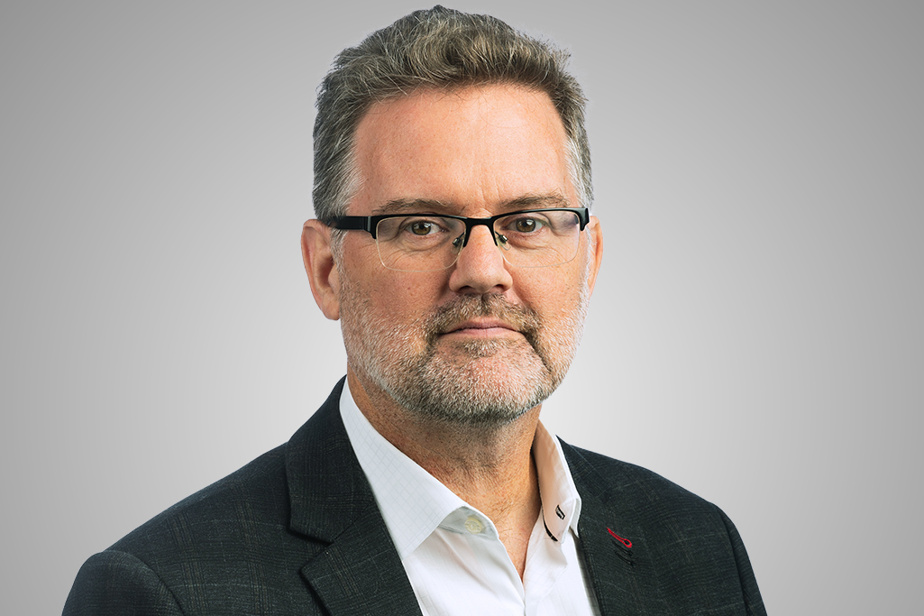We are 30 or 40 days away from the adoption of all municipal budgets in Quebec. Every year, I repeat, every year, they are adopted in November or December. However, the government has still not informed cities of the sums they will have available to deal with the public transport crisis. This is not serious.
The blockage is explained in particular by the fact that the government’s position is based on three false ideas:
- transport companies can reduce their current exceptional deficit without reducing services;
- public transport is an expense like any other;
- Montreal is a problem.
Let’s take them one by one.

PHOTO MARTIN CHAMBERLAND, LA PRESSE ARCHIVES
Marie-Claude Léonard, general director of the Société de transport de Montréal. At the STM, 85% of the budget is directly linked to operations. Making significant cuts without reducing services is a figment of the imagination, writes Maxime Pedneaud-Jobin.
Reduce without reducing?
In a public transport company, the bulk of the expense is made up of the payroll of drivers and mechanics as well as rolling stock. At the Société de transport de Montréal (STM), 85% of the budget is directly linked to operations. In companies the size of the Société de transport de l’Outaouais, if we removed all the staff who are not directly linked to the service offering, we would not even cover the deficit linked to ridership for 2023 In public transport, making significant cuts without reducing services is a figment of the imagination.
If the government refuses to hear the arguments of the cities of Greater Montreal, it could perhaps listen to those of the MRC of Brome-Missisquoi. According to her, the deficits are explained by the increase in the cost of fuel, vehicles, interest on loans and labor as well as by the absence of indexation of government subsidies and by the drop in ridership revenue related to the pandemic. As a result, the MRC must reduce the service offering, for example, by limiting agreements with private companies to facilitate the transportation of workers.
Yes, there are always ways to manage better, but denouncing poor management is like using a tree to hide the forest: the entire current economic context is toxic for public transport.
Even before the pandemic, the considerable increase in the supply of services, an increase ardently desired by all levels of government, put pressure on operating expenses which was no longer sustainable, neither by users nor by the property tax (the average contribution share of Quebec municipalities is already the highest in Canada)1. The Quebec government itself recognizes the flaws in the transportation network financing model… it has also held two extensive consultations on the subject, without, to date, proposing a solution.
Worse still, when the municipalities voted to extend the contribution on registration to all municipalities in Greater Montreal – in order to develop the public transport offer – the previous Minister of Transport opposed it! We turn arround.

PHOTO CAROLINE GRÉGOIRE, LE SOLEIL ARCHIVES
For each dollar paid by an individual, the community pays the equivalent of $5.77 when traveling by car and $1.31 when traveling by bus.
An expense like uno other?
No, public transport is not an expense like any other. It is public transport users who provide a service to the government, not the other way around2 !
For each dollar paid by an individual, the community pays the equivalent of $5.77 for a trip made by car and $1.31 for a trip made by bus3.
Furthermore, it must be repeated, the fight against GHGs necessarily involves public transport.
Each individual choice to switch from the car to the bus is a considerable collective gain. I risk a comparison: who would say that education is in deficit?
Montreal is a issue ?
“I do not believe that it is up to the government and taxpayers of Quebec to pay for 100% of a deficit of more than 2 billion in Greater Montreal,” said the Minister of Transport, Geneviève Guilbault, to justify her hesitation. .

PHOTO MARTIN CHAMBERLAND, LA PRESSE ARCHIVES
The Mayor of Montreal, Valérie Plante, and the Minister of Transport and Sustainable Mobility, Geneviève Guilbault, in STM facilities. Greater Montreal is made up of 82 municipalities, 48% of Quebec’s population and 55% of its GDP.
The Société de transport de Montréal should be treated differently from other transport companies. For what ? They all have a deficit. The crisis is everywhere. The government really needs to get rid of its reflex to hit Montreal, we all lose. Need I remind you that Greater Montreal is made up of 82 municipalities, 48% of Quebec’s population and 55% of its GDP?
In this regard, Finance Minister Eric Girard recently cited a study according to which the GDP gap between Ontario and Quebec is, in fact, a GDP gap between Montreal and Toronto4. The Ministry of Finance should therefore encourage the Ministry of Transport to invest in public transport in Montreal, it is a proven way to increase the attractiveness of the metropolis and the productivity of the workforce, therefore to increase the GDP.
Blaming Montreal or transportation companies gets you nowhere. Underfunding public transportation only brings us closer to the precipice. We must do better.
3. Figures taken from the “Comparative evaluation of total travel costs according to the mode of transport used in the territory of the Metropolitan Community of Quebec”, by Voisin, Dubé and Coehlo, Université Laval, February 2021.
